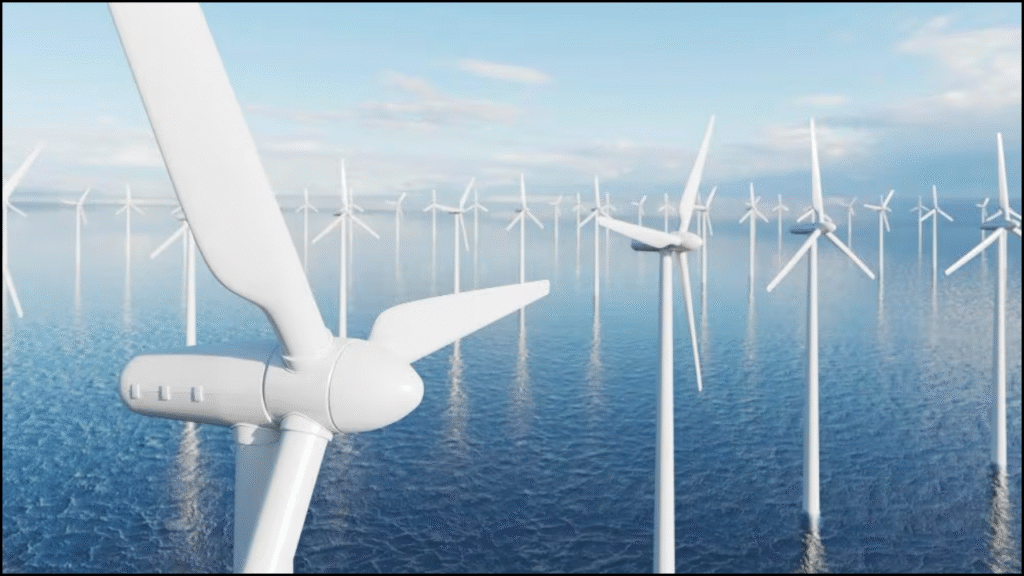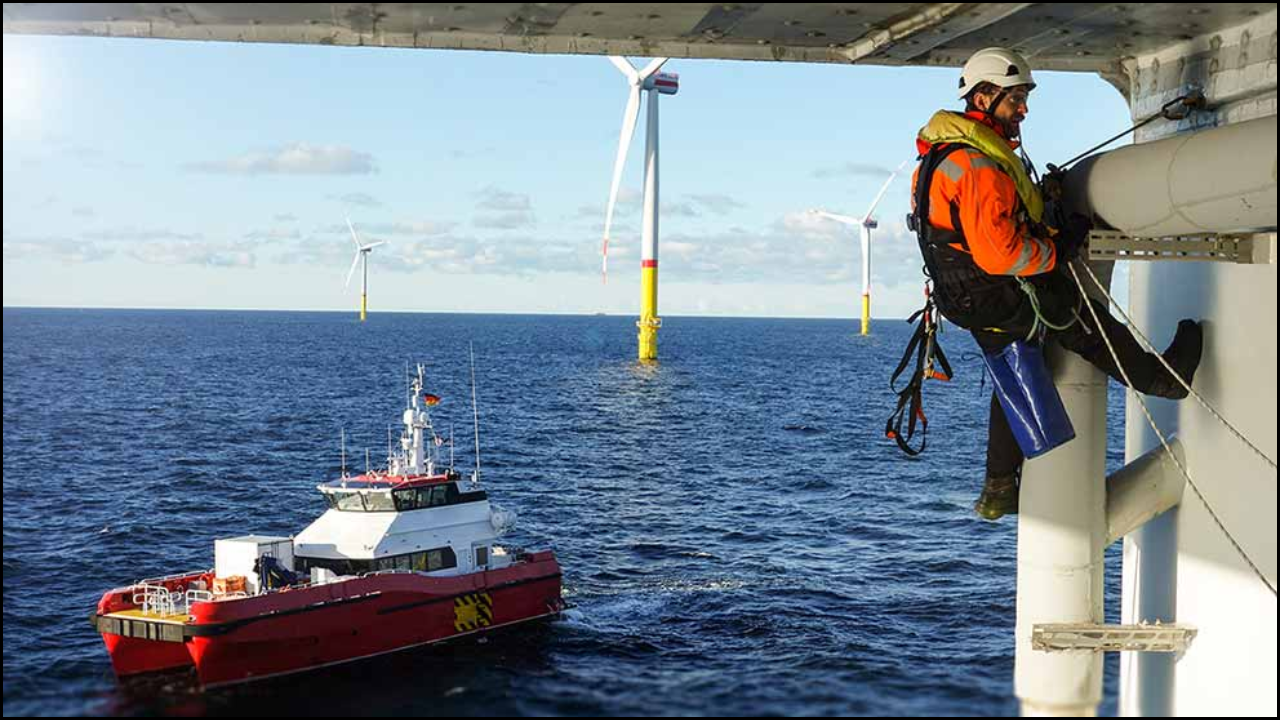
The Net Zero 2050 target represents a global commitment to balance greenhouse gas emissions with their removal from the atmosphere. To meet this ambitious goal, countries must drastically reduce dependence on fossil fuels and accelerate the deployment of clean technologies. Offshore renewables, located at the intersection of technology and sustainability, offer immense untapped potential. Their reliability, scalability, and low environmental footprint make them central to the world’s decarbonization strategies.
Table of Contents
The Role of Offshore Renewables in Decarbonization
Offshore renewable energy systems directly support Net Zero by replacing carbon-intensive power sources. Their generation capabilities are stable, predictable, and suitable for large-scale deployment in coastal and deep-sea regions.
- Offshore wind farms produce vast amounts of clean electricity with minimal land use.
- Tidal and wave energy convert ocean currents and wave motion into consistent renewable power.
- Hybrid systems integrate offshore wind, solar, and hydrogen production platforms.
- Energy generated offshore can be transmitted to onshore grids or used directly for green hydrogen production.
Major Offshore Renewable Energy Sources Contributing to Net Zero
| Type of Offshore Renewable | Description | Contribution to Net Zero Goals |
|---|---|---|
| Offshore Wind Energy | Utilizes wind turbines installed at sea to generate electricity. | Large-scale power generation displaces fossil fuel-based electricity. |
| Floating Wind Turbines | Enables wind farms in deeper waters with stronger and steadier winds. | Expands renewable potential beyond shallow coastal areas. |
| Tidal Energy | Captures kinetic energy from tidal movements. | Provides predictable and steady power generation. |
| Wave Energy | Harnesses surface wave motion for electricity. | Complements wind and solar for balanced renewable supply. |
| Offshore Solar Platforms | Floating photovoltaic arrays on water surfaces. | Supports hybrid energy systems in coastal zones. |
Reducing Carbon Emissions Through Offshore Projects
Offshore renewables play a direct role in decarbonizing the power sector — one of the largest contributors to global emissions. By substituting coal and gas plants with clean marine energy, nations can reduce their carbon intensity significantly.
- A single gigawatt (GW) of offshore wind power can prevent millions of tonnes of CO₂ emissions annually.
- Offshore hydrogen production using renewable electricity eliminates fossil-based hydrogen sources.
- Marine renewables support electrification of transport and industrial sectors.
- Integration with smart grids ensures optimized energy distribution and minimal waste.
Economic and Social Contributions to Net Zero Goals
Beyond environmental benefits, offshore renewables stimulate economic growth, innovation, and community development — all vital for sustainable Net Zero transitions.
| Socio-Economic Impact | Details |
|---|---|
| Job Creation | Offshore construction, maintenance, and research create thousands of skilled jobs. |
| Local Industry Growth | Coastal communities benefit from new business and investment opportunities. |
| Energy Security | Domestic renewable energy reduces reliance on imported fossil fuels. |
| Regional Development | Infrastructure improvements strengthen coastal economies. |
| Innovation Ecosystem | Joint ventures drive advancements in robotics, AI, and energy storage. |
Integration of Offshore Renewables with Hydrogen Economy
Green hydrogen serves as a cornerstone for Net Zero, and offshore renewables provide the clean electricity required for its production.
- Offshore wind-powered electrolysis produces hydrogen without emissions.
- Floating hydrogen hubs combine generation, conversion, and storage at sea.
- Hydrogen supports the decarbonization of heavy industries and long-distance transport.
- Partnerships between Europe, Asia, and the Middle East are developing large-scale hydrogen export systems.
Grid Integration and Energy Storage Challenges
The growth of offshore renewables also introduces challenges related to grid connectivity and energy balancing. Overcoming these barriers is essential for achieving Net Zero goals.
| Challenge | Description | Possible Solution |
|---|---|---|
| Grid Capacity Limits | Existing grids may struggle with offshore energy transmission. | Investment in high-voltage subsea cables and smart grid technologies. |
| Energy Storage | Variable output from wind and wave sources requires efficient storage. | Development of large-scale batteries and offshore hydrogen storage. |
| Intermittency | Fluctuations in generation may affect supply reliability. | Use of hybrid systems combining wind, wave, and tidal sources. |
| Infrastructure Costs | Offshore systems are expensive to build and maintain. | Joint funding through international collaborations and public–private partnerships. |
Environmental Advantages Supporting Climate Action
Offshore renewables not only generate clean energy but also contribute to broader climate adaptation goals.
- Reduction of air and water pollution improves marine and coastal ecosystems.
- Properly designed wind and tidal systems minimize habitat disruption.
- Integration with marine spatial planning supports sustainable ocean management.
- Renewable-powered desalination units provide clean water for coastal populations.
Global Collaboration and Policy Alignment
International partnerships play a crucial role in scaling offshore renewable technologies to meet Net Zero 2050 targets.
- The UK–China Joint Offshore Renewable Energy Program focuses on floating wind and grid innovations.
- The EU’s Green Deal and Horizon Europe frameworks fund multinational renewable energy research.
- Asia-Pacific initiatives link Japan, South Korea, and Australia in clean hydrogen and offshore wind cooperation.
- African and Latin American coastal programs receive international support for marine energy development.
Innovation Driving the Offshore Transition
Technological innovation remains the backbone of offshore renewable expansion. Emerging solutions improve performance, safety, and efficiency, ensuring offshore systems remain central to Net Zero strategies.
- Smart sensors and AI improve predictive maintenance and reduce downtime.
- Autonomous underwater robots assist in the inspection and repair of turbines and cables.
- Advanced materials increase turbine durability against saltwater corrosion.
- Digital twins and real-time analytics optimize offshore plant performance.
Long-Term Vision for 2050
To meet Net Zero objectives, offshore renewables must become integrated parts of a global clean energy ecosystem. This requires continued investment, supportive policies, and equitable global participation.
| Strategic Focus Area | Key Goal by 2050 |
|---|---|
| Offshore Wind Expansion | Increase global capacity to over 1,000 GW. |
| Marine Energy Innovation | Develop commercially viable tidal and wave systems. |
| Global Grid Connectivity | Build transnational renewable energy networks. |
| Green Hydrogen Integration | Scale offshore hydrogen production for global industries. |
| Just Transition Policies | Ensure fair access to renewable jobs and energy. |
Last Words
Offshore renewables represent a cornerstone of the world’s strategy to achieve Net Zero by 2050. Their ability to provide vast, clean, and consistent energy makes them indispensable in the global decarbonization effort. Beyond emissions reduction, offshore renewables fuel innovation, generate employment, and strengthen coastal resilience. As nations work together through policy alignment and technological advancement, the oceans will continue to power humanity’s most ambitious climate goal — a carbon-neutral planet by 2050.





